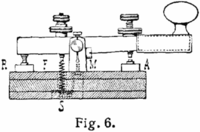 |
| The Sepoy Mutinee 1857 (photo credits wikipeia) |
The end of the telegram services
in India on July 15, 2013, a month prior to India’s 67th
Independence Day on 15th August, is significant in many ways. It was
instrumental in establishing British hegemony in the Indian subcontinent.
In 2007, India commemorated 150
years of the 1857 Revolt, which was coined the First War of Indian Independence
by Karl Marx. The telegraph service survived 163 years from the day of its
introduction in the country in 1851. Since then it had been the basic means of
communication in India.
Literature, be it classical
literature, whodunits or the espionage genre - is agog with the use of the
telegraph service. Sherlock Holmes, Hercule Poirot and Byomkesh Bakshi in our
very own backyard have used the service to telling effect.
The Bharat Sanchar Nigam Limited,
early in 2013, stopped the telegram service for overseas communication.
Thereafter, it decided to discontinue it in the domestic market from July 15.
The BSNL Board approved of the decision. Subsequently the Telecom Board gave
the final clearance to the withdrawal of the “dot dash” service.
 |
| AMorse Key (photo credits wikipedia) |
The “dot dash” or the Morse Code,
named after Samuel Finley Breese Morse, the American artist inventor who was
the brain behind the Telegraph and the code, used to move through a device that
again sent them through wires to another device which in turn typed them in
normal letters on strips of paper. In the USA the first telegram message was
sent by Morse using the Morse Code in 1830. The USA discontinued the service in
2006.
Financial constraints compelled
the BSNL to wound up the services. It had taken up the service from the Indian
Post and Telegraph. For a long time, the common Indian considered the telegraph
a symbol of imperial rule. However, the services brought this vast country
together. Eventually it became an integral part of everyday life. In the long
run, it emerged as the oldest milestone of modern India.
The telegraph service was
inexpensive and quick. It was used at random to send emergency messages and
birth and death news. The rapid increase
in the use of mobile phones and exposure to the World Wide Web accelerated the
decline in the usage of the telegraphic service.
There was a time when several
hundred thousand telegrams used to move over the wires of the telegraph system
in India in a day. As the number of telegrams sent in a day reduced, the losses
incurred by the BSNL escalated. But the end of the telegraph service in India
will put a major section of its population to disadvantage. There are
innumerable Indians who have no access to phones. Withdrawal of the service
will put these teeming millions at the receiving end.
Kolkata’s association with the
telegraph goes back to 1850. It was here in November 1850, the first telegraph
line of India was laid between the Alipore Telecom Factory in Kolkata- then Calcutta
- and the Diamond Harbour Post Office covering a distance of around 45 km.
Sir William Brook O’ Shaughnessy
was the man behind the initiation of the telegraph service in India. Sir
William was an eminent physician. He carried out experiments with the telegraph
on his own. He was successful in laying a seven mile long telegraph line from
the Botanical Gardens in Howrah. This was in 1839. But his efforts had no
significant impact.
 |
| The hanging of 2 sepoys of the 31st Native Infantry. Albumen Siver Print by Felice Beato, 1857 (credits wikipedia) |
In 1848 Sir William succeeded in his effort to
convince Lord Dalhousie, the then Governor General of India, about the importance
of the telegraph system in this vast country. He made Lord Dalhousie realise
that the telegraph would be speedier than rail. The telegraph system came to
the rescue of the British Empire during the Sepoy Mutiny of 1857, thereby,
cementing the British domination over the Indian subcontinent.
In March 1851, the first test
telegram message was sent by the British East India Company from the Alipore
Telecom Factory in Calcutta to the Diamond Harbour Post Office. The service was
opened to the public in December the same year. By 1854, telegraph lines were
laid across the country, in Delhi, Bombay and Madras.
It was with the help of telegraphic
communication that the British suppressed the revolution that broke out against
their rule under the East India Company in 1857. From telegraphic messages the British
army got advance information of impending attacks and troop movements of the Indians.
These gave the British forces ample time to respond and put away their women,
children and the sick to safety.
As Babur, with his motley group
of soldiers, used the artillery to defeat the huge army of Ibrahim Lodi, in
1525, at the First Battle of Panipat, and establish the Mogul dynasty in India,
the British established their control over this country with the help of the
telegraph system.